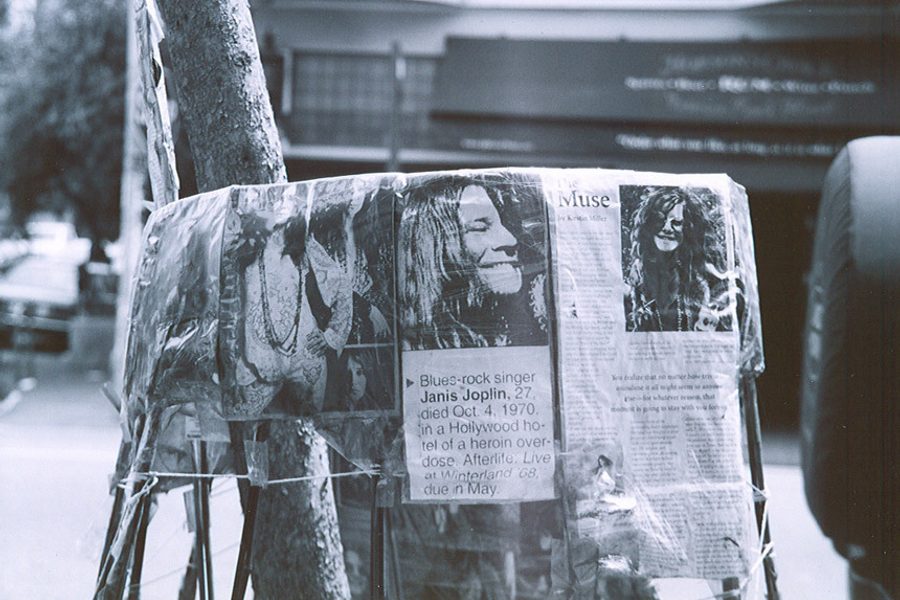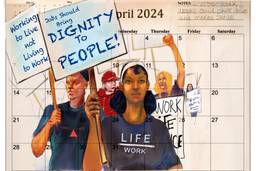Relevant to Our Interests?
Longtime essayist Ellen Willis’ work is important, whether or not it encapsulates our current state of affairs.
Jude Ellison Sady Doyle

The word “relevant” is often used to describe the work of cultural critic and essayist Ellen Willis. But it’s generally prefaced by some equivalent or variant of the word “still.” For example, in her back-of-book blurb for The Essential Ellen Willis, released this month by the University of Minnesota Press, Feministing founder Jessica Valenti writes: “It’s incredible that decades after it first made waves, Ellen Willis’ writing is still as relevant as ever.” Meanwhile, in his preface to the section of the book that collects her 1990s essays, Cord Jefferson laments, “I wish Ellen Willis were no longer relevant,” going on to catalogue the depressing topics she covered — racism, sexism, the steady impoverishment of intellectual workers — that we still have to worry about today. And the editor of the collection, Willis’ daughter Nona Willis Aronowitz, notes in the foreword that when reading her mother’s work, “I couldn’t help but see parallels to present-day questions … [they] convinced me of her work’s ongoing relevance.”
It’s not that I question the basic assertions that Willis has something to say to us in 2014, that we can use her points to confront present-day questions of politics and aesthetics and that we ought not to ignore her — all of this is very true. But such repetition is depressing. Taken all together, it reads like special pleading: As if the (excellent) writers in question feel the need to convince a hostile audience that they can, in fact, read a 20-year-old essay without falling out of touch with the zeitgeist or wasting their time.
But writing — good writing, anyway — has a tendency to last for hundreds or even thousands of years. After all, plenty of people claim to model their lives on a millenia-old listicle that some guy got carved into stone tablets. We still go to the theater to watch Elizabethan plays. “Relevant” implies that the chief value of writing is whether it speaks to the precise conditions and aesthetics of the exact second in which we’re reading it. (Is Joan Didion’s “On Keeping a Notebook” relevant? How about Mary Wollstonecraft’s “A Vindication of the Rights of Woman”? Or Beowulf?)
Although Willis’ work is often prescient, and does in fact often speak to the conditions and arguments of our present moment — her early writing on street harassment, in “Up from Radicalism,” could have been cadged from a present-day Tumblr — that’s not why you should read her. You should read her because she’s good. And to evaluate Willis solely on relevance denies one of the chief pleasures of The Essential Ellen Willis: the chance to see a writer grow up and evolve, over the course of five decades.
Many of the essays collected in the first half of the book have already appeared in Out of the Vinyl Deeps (a collection of her rock criticism, published in 2011) and No More Nice Girls (feminist and more generally countercultural writings, first published in 1992). What The Essential Ellen Willis does, very well, is to place those essays and themes in context, to let the reader see what role they played in Willis’ quest to shape, define and continually redefine her own voice.
For example, her much-celebrated rock writing — sharp yet casual, the sort of thing that can kick off with, “On November 7, I admitted I was turned on by the Sex Pistols” and wander off into a discussion of hype cycles, the legacy of the ’60s, and the frustrating wimpiness of feminist musicians — turns out to have been only a small part of her career, something she’d more or less tossed to the side by the 1980s. Her prose style starts out conversational and slangy. As she writes in a piece on Janis Joplin: “Janis sang out of her pain as a woman, and men dug it. Yet it was men who caused the pain, and if they stopped causing it they would not have her to dig.” Over the next few years, it tightens up into a more formal, “writerly” diction.
Big personal essays come into the picture: “Next Year In Jerusalem” (1977) details her complicated relationship with Judaism via her brother’s decision to enter an Orthodox yeshiva, and “Escape From New York” (1981) is an attempt to take the temperature of 1980s America through a cross-country Greyhound trip. But these, too, phase back out again. By the time the 1990s roll around, Willis is focused away from the arts and from her own life. For nearly a decade, she strictly publishes her takes on current issues — the O.J. Simpson trial, welfare reform, many pieces on Monica Lewinsky — to the point that it’s a surprise to see her eventually edge back toward criticism, with a piece on “The Sopranos” (2001). She also seems to back away, starting in the 1980s, from a specifically feminist perspective to a more generally leftist one, writing about the Iraq War and Israel as often as she wrote about sexual harassment or reproductive rights.
To watch Willis evolve is also to watch radical and left-wing politics evolve. In particular, the book acts as a crash course on the history of feminism, including some moments that we might prefer to forget. In her early work, you see the unpleasant tendency of ‘60s white feminists to equate their fate with that of “black people,” typically black men. “Black kids find out they’re black, little girls find out they’re female,” she writes in 1969, seemingly unaware that some children wake up to find that they’re both. At some points, she seems to argue that those black men have it better than she does: “[A] genuine alliance with male radicals will not be possible until sexism sickens them as much as racism.” Oof.
It isn’t until 1982 that she confronts the question of racism within feminism, by reviewing bell hooks’ Ain’t I a Woman. And although the review is positive — she likes hooks’ points — she can’t help but get defensive, exclaiming, “Who are these upper-class feminists I keep hearing about?” If you have to ask, you usually won’t like the answer. And sure enough, Willis admits to hiring a nanny just a few essays down the line.
In other debates, Willis comes off better. In the 1970s and 1980s, she gets involved in the now-infamous Porn Wars, coming down hard on the “pro” side. Whereas she identified throughout her life as a radical feminist because she believed that male supremacy was a systemic form of oppression, she was deeply opposed to what she called the trend of “authoritative pronouncements on what women really want/ought to want/would want if they were not intimidated/bought off/brainwashed by men.” In “Toward a Feminist Sexual Revolution,” she writes that this trend led to “the development of feminist sexual orthodoxies that curtail women’s freedom by setting up the movement as yet another set of guilt-provoking rules about what women should do and feel.” (She also expresses concerns that Catharine MacKinnon’s pioneering work in sexual harassment law will bring about a world where it is looked-down-upon for teachers to have affairs with their students. Willis’s stubbornness can frequently lead her into hard-edged, obnoxious contrarianism — which, I would argue, is all a part of the fun.)
Willis thereby essentially anticipated and wrote the script for the sex-positive movement of the 1990s. For her, sex-positivity was built into the feminist project from the get-go. Feminism was supposed to make you free. Freedom was supposed to make you happy. Sexual satisfaction was part of happiness. Therefore, feminism meant you got to get laid, and you got to get laid in the manner most pleasing to you personally, and that was pretty much that.
These essays aren’t “relevant” in the sense that you could print them now without an explanation, or in the sense that they’re on-trend with current feminist discussions. But they’re immensely important, because they’re signposts in the evolution of a writer and of a movement. Willis learned to handle race more responsibly — her Anita Hill coverage is great — because her whole generation of white feminists was challenged to learn. She figured out her stance on the question of sexual freedom versus sexual exploitation — which continues today, in debates over everything from porn to one-night-stands to precise sexual positions — by fighting it out within a feminist movement that was fracturing along pro-porn and anti-porn, pro-penetration and anti-penetration lines.
For any feminist writer working today, The Essential Ellen Willis is useful in that it allows us to see how ideas of what it means to be a “feminist” might change over time, and to imagine a viable future for ourselves. In an age where “writing” often comes down to disposable quick-takes and context-free 140-characters-or-fewer reactions, the collection demonstrates that it’s worthwhile instead to grow with writers, to hang on through their changes of style and opinion. It also reminds us that some arguments are better and more interesting when the writer has been working on them for decades, rather than pumping them out as fast as possible to make sure they retain “relevance” in a crowded 24-hour news cycle.
It’s also wonderful as evidence that Willis never gave up her commitment to experimentation. Toward the end of her career, she was attempting an entirely new sort of project: A big, unified book, with a through-line argument (all of her previous books had been essay collections) attempting to reunite left-wing political theory with the work of Freud. Her illness and 2006 death prevented her from finishing the project. But there’s something thrilling about the chapters we do have. The woman worked for five decades, and five decades into her career, she had still managed to come up with a version of Ellen Willis that was entirely new.
Jude Ellison Sady Doyle is an In These Times contributing writer. They are the author of Trainwreck: The Women We Love to Hate, Mock, and Fear… and Why (Melville House, 2016) and was the founder of the blog Tiger Beatdown. You can follow them on Twitter at @sadydoyle.








